We are in Friuli, a border region where water does not limit territories but shapes landscapes and binds communities together, intertwining their histories. Water has always marked the paths along which people from all times and places have traveled.
Those who travel know that their spirit and body must be entrusted to those who can protect them from misfortune, to Saint Christopher, the giant protector of fords and travelers, who carried Christ on his shoulders with all the weight of the world: he is often found frescoed in churches near waterways.
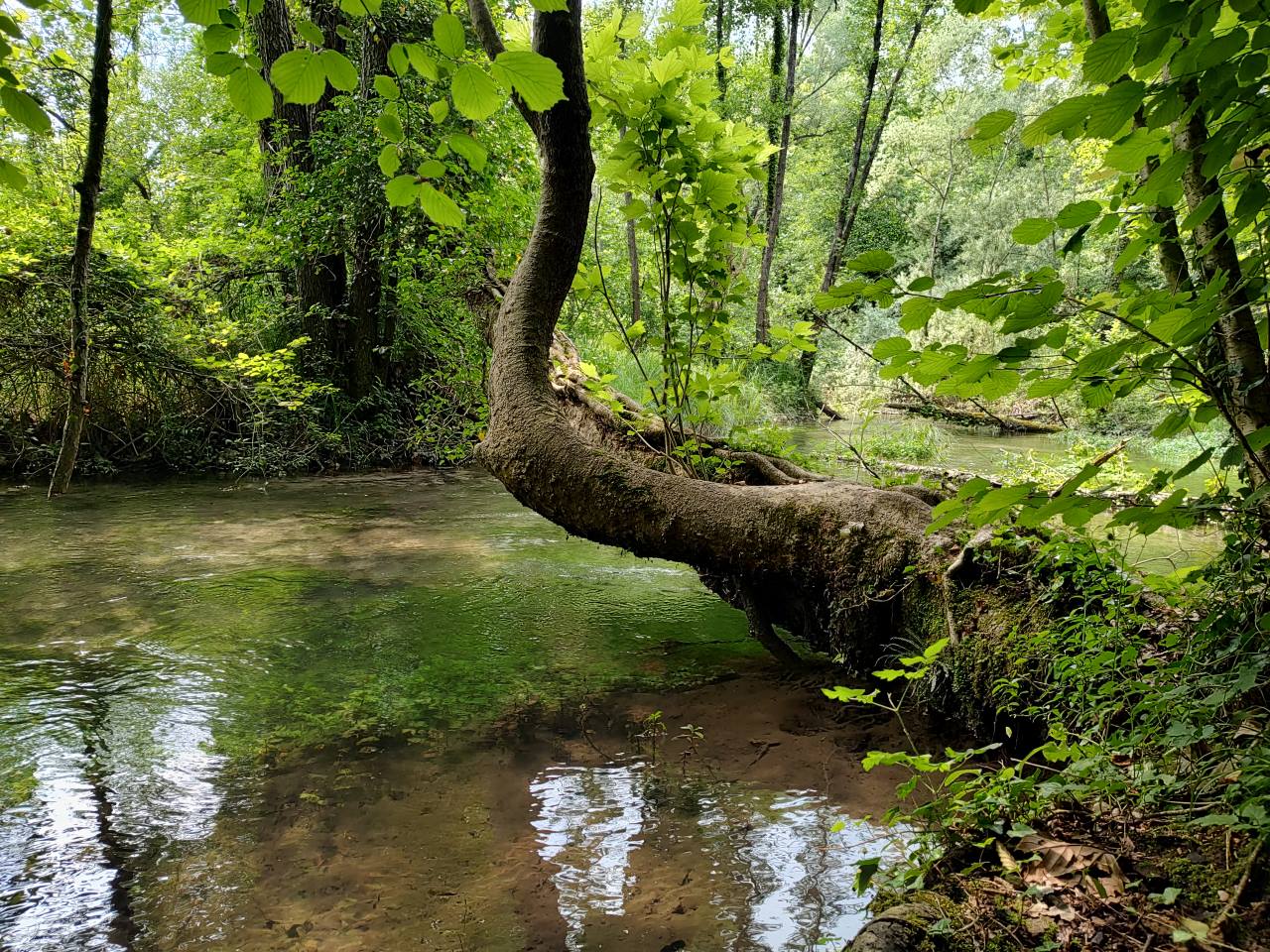 Photo by Montagna Leader
Photo by Montagna Leader
In 2017, thanks to the intuition of forestry expert Luisa Cappellozza and architect Giorgio Viel, the first route of the Cammino di San Cristoforo (St. Christopher’s Way) was created to promote the cultural and natural heritage between Piave and Tagliamento.
Today, the Way of Saint Christopher stretches along a route of over 350 km, crossing the mountains and foothills of western Friuli and touching 25 municipalities. There are two UNESCO sites, the Palafitticolo di Palù di Livenza and the Friulian Dolomites, and four places recognized as among the most beautiful villages in Italy: Polcenigo, Poffabro, Toppo, and Spilimbergo.
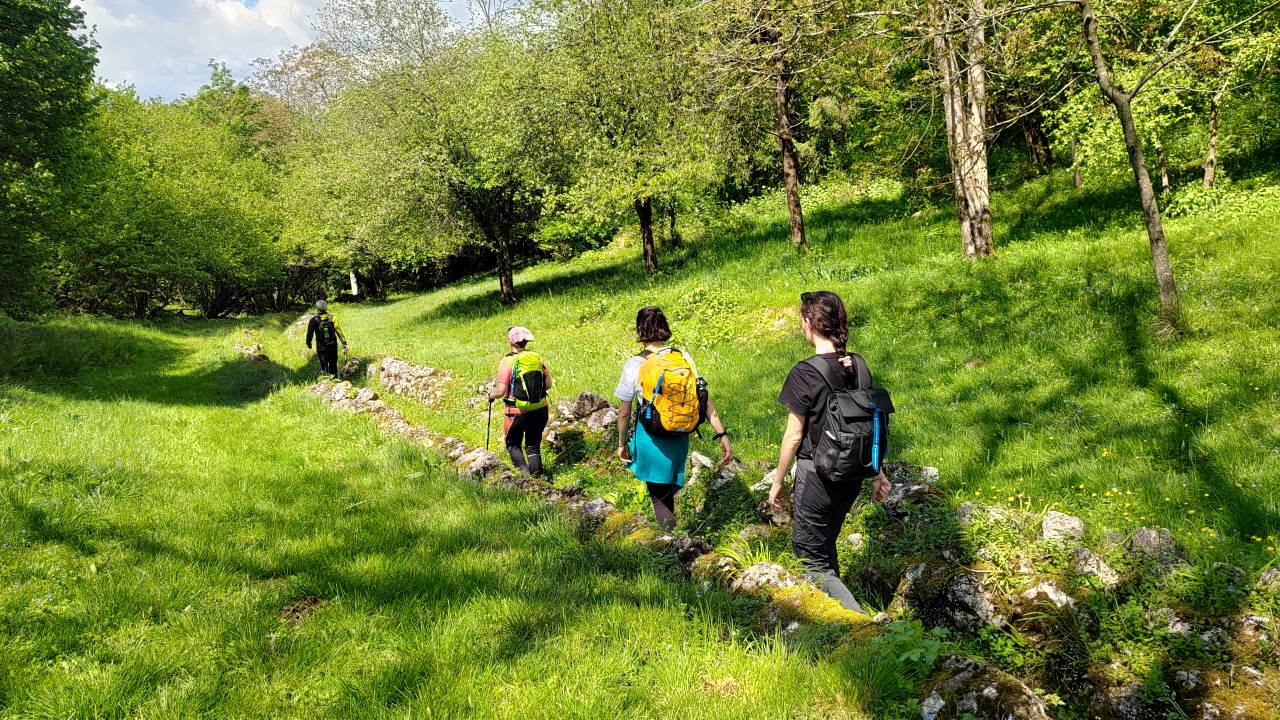
Anello Val Meduna – Photo by Montagna Leader
The route can be covered in its entirety or in stages, with the option of taking detours and variations, all clearly marked and indicated by dedicated colored signs: the Pedemontano route (yellow) – 134 km in 9 stages, the Magredi route – 131 km in 6 stages, and the Anello della Val Meduna (Val Meduna Loop) – 50 km in 3 stages. Detours to discover other interesting features of the area are always marked in red.
The routes touch on, enhance, and connect places rich in tradition and rural life, ranging from the Friulian Dolomites to the foothills and the Magredi, in a succession of landscapes that offer an incredibly varied view. The trail allows you to immerse yourself and enjoy the beauty, nature, art, history, and scents of a land that has always been home to important cultural exchanges. Due to its characteristics, it is suitable for beginners, but also for experienced hikers who want to immerse themselves in the soul that this area and its communities preserve and recount with deep passion.
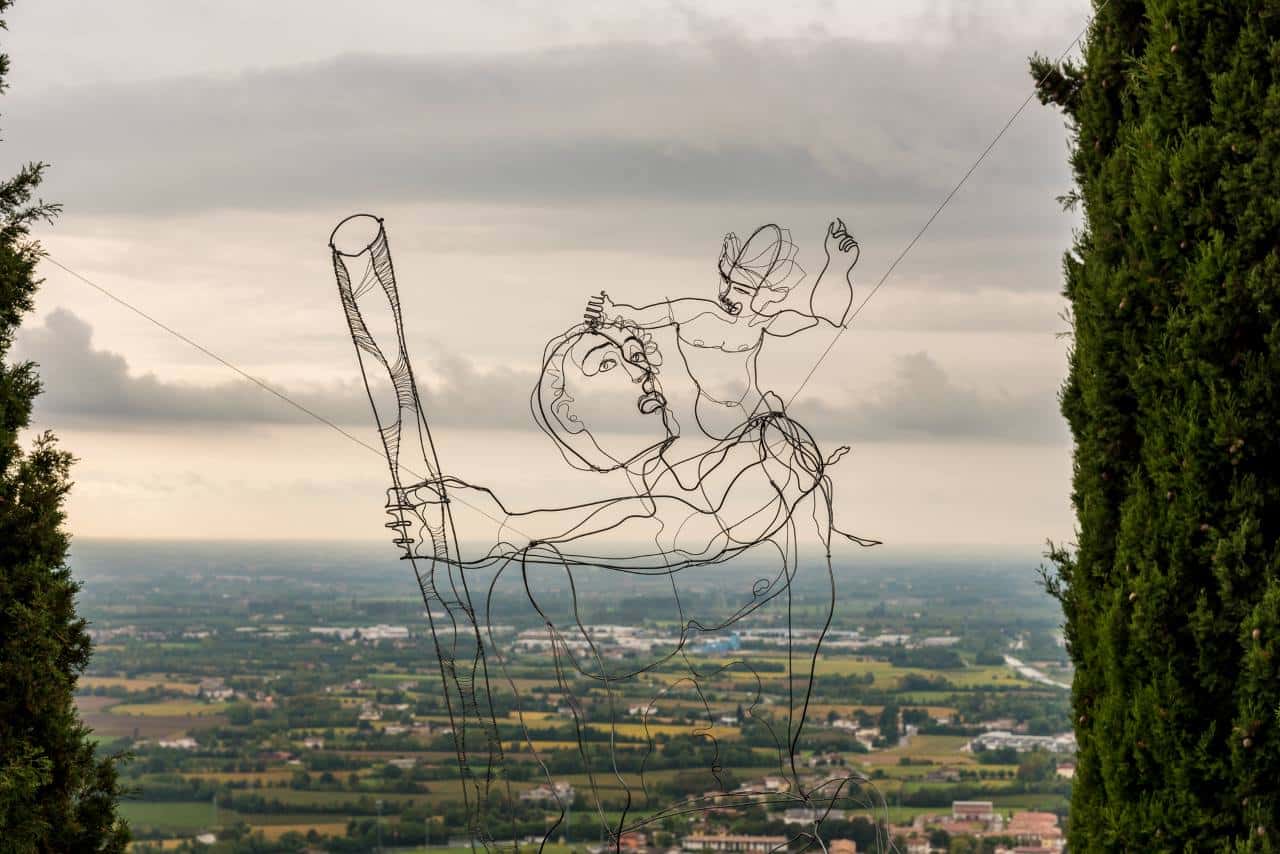
San Cristoforo, opera land art – Photo by Damiano Giacomello
Polcenigo is the first of the most beautiful villages we encounter, where water has played a leading role since ancient times, when Neolithic men built stilt houses. The spring water that suddenly gushes out at the foot of the mountains has always been an element to which people entrusted their fortunes and hopes, both sacred and profane, as evidenced by the various places of worship and ancient archaeological remains. Polcenigo is also known for its traditional Festival of Baskets, which for over 350 years has colored the streets and squares surrounded by stately buildings.
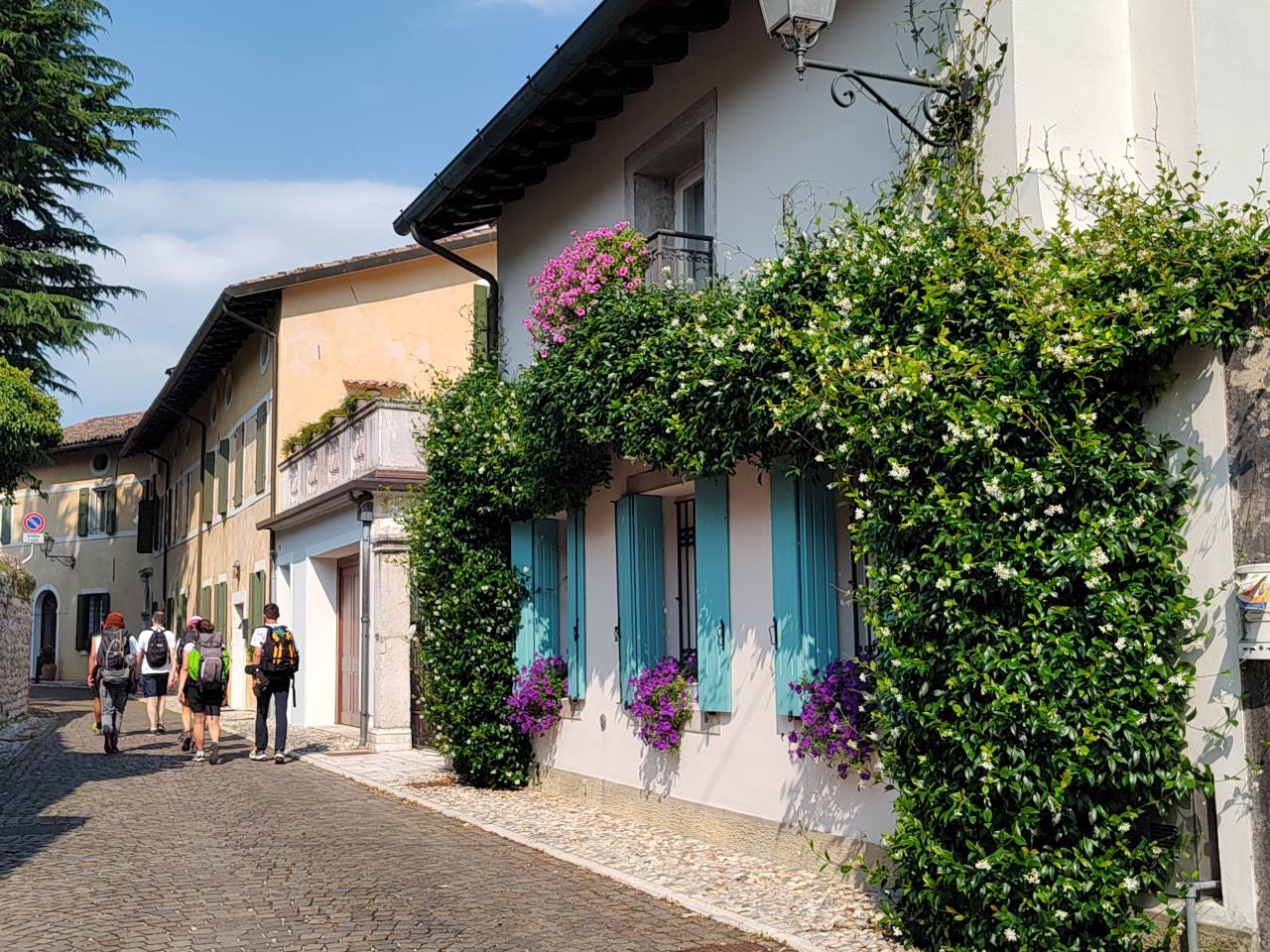 Photo by Montagna Leader
Photo by Montagna Leader
Continuing along the path and climbing into the heart of Val Colvera, in the Friulian Dolomites Natural Park, you come across the stone houses of Poffabro, known as the “Presepe tra i Presepi” (Nativity scene among nativity scenes) due to its enchanting geographical position and the magical atmosphere that is created during the Christmas period. Here, silence reigns supreme as you lose yourself in the narrow streets and courtyards bordered by rows of houses with characteristic balconies, signs of material culture and witnesses to spontaneous rural architecture.
Further down the valley is the village of Toppo in the municipality of Travesio, where, along Via della Fornace, you will want to peek through the doors that open onto inner courtyards, rich in greenery and memories of the past, where the peasant soul and the work of the land resonated with the rhythm of time and the seasons. Watching over the village is the ancient medieval castle, which still retains its majesty and the secrets of the clandestine mint enclosed in the keep.
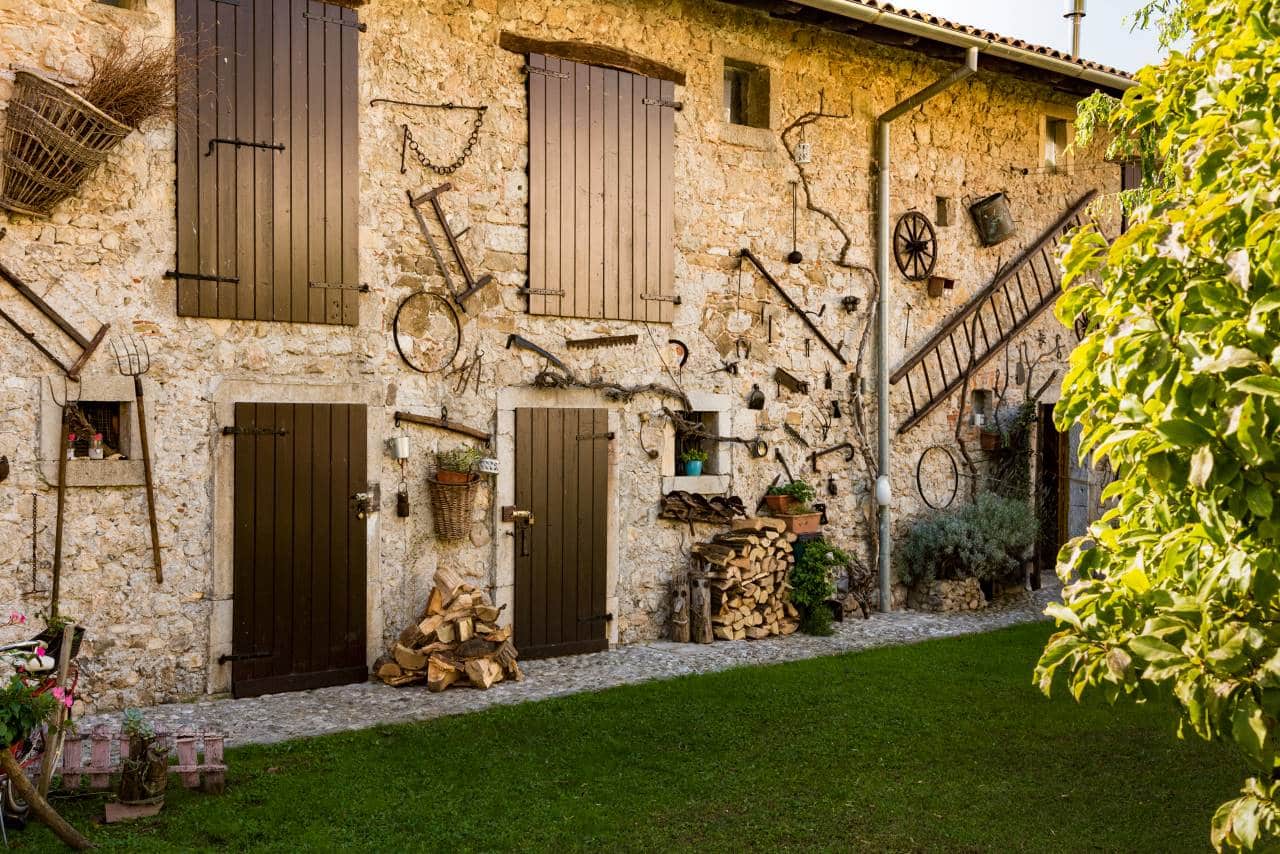
Toppo – Photo by Damiano Giacomello
The Pedemontano route finally reaches Spilimbergo, a medieval town where the great Saint Christopher frescoed on the Romanesque-Gothic cathedral welcomes walkers climbing up the ancient ford and the banks of the Tagliamento River. Here, among the silent walls, pastel-colored buildings, squares, and gardens, it is easy to lose yourself in the beauty of the stories of the Accoglitori di Città (City Welcomers), among the mosaics, whose tiles are gifts from the rivers and Venetian glassmaking art, or among exhibitions of excellence dedicated to photography.
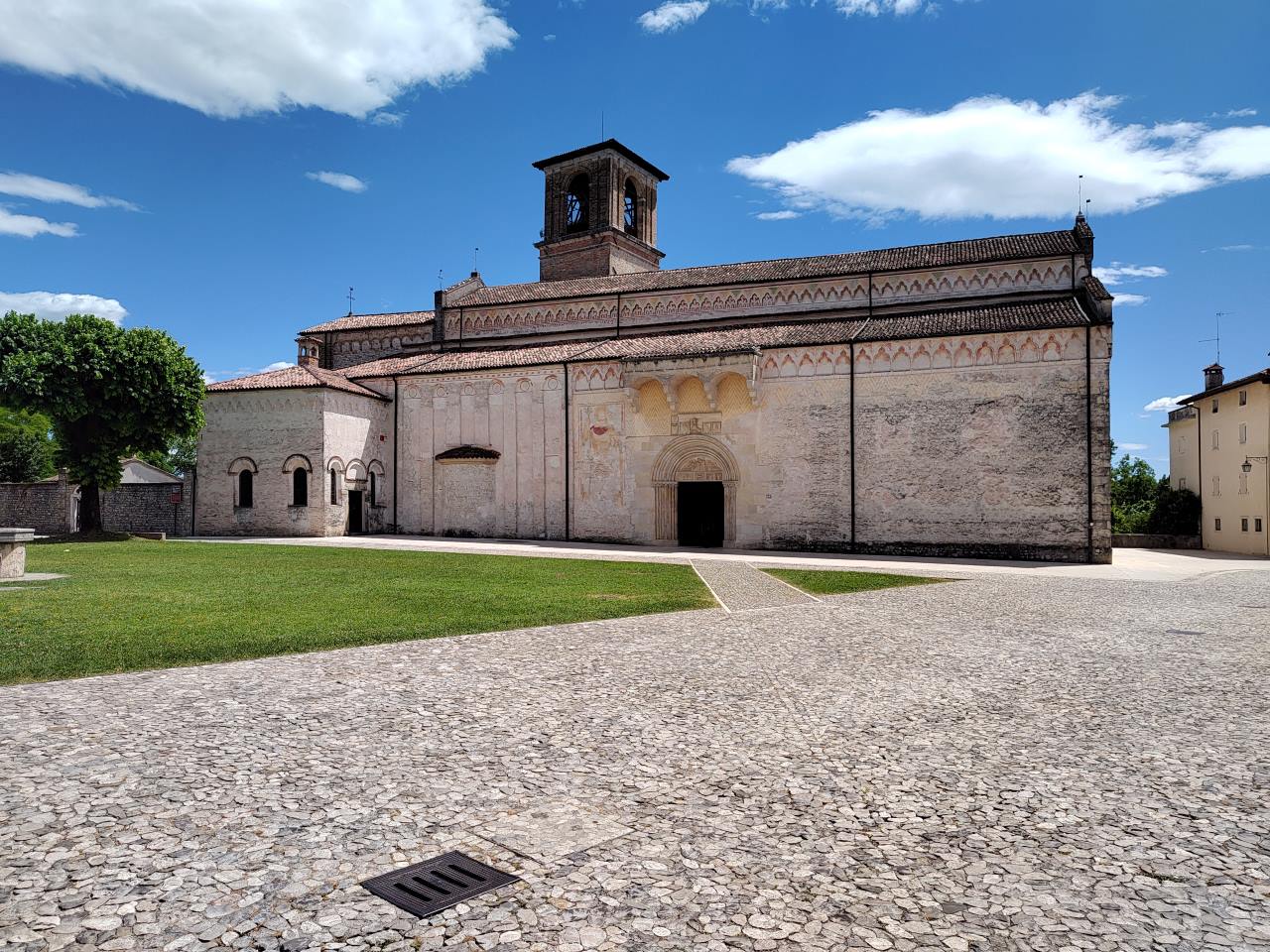
Duomo di Santa Maria Maggiore – Photo by Montagna Leader
Montagna Leader GAL del Friuli Occidentale is the managing body of the Way.
The Way of St. Christopher is listed in the FVG Network of Trails, the FVG Register of Trails, and the Ministry of Tourism’s Catalog of Italian Religious Trails.
Cover photo by Damiano Giacomello

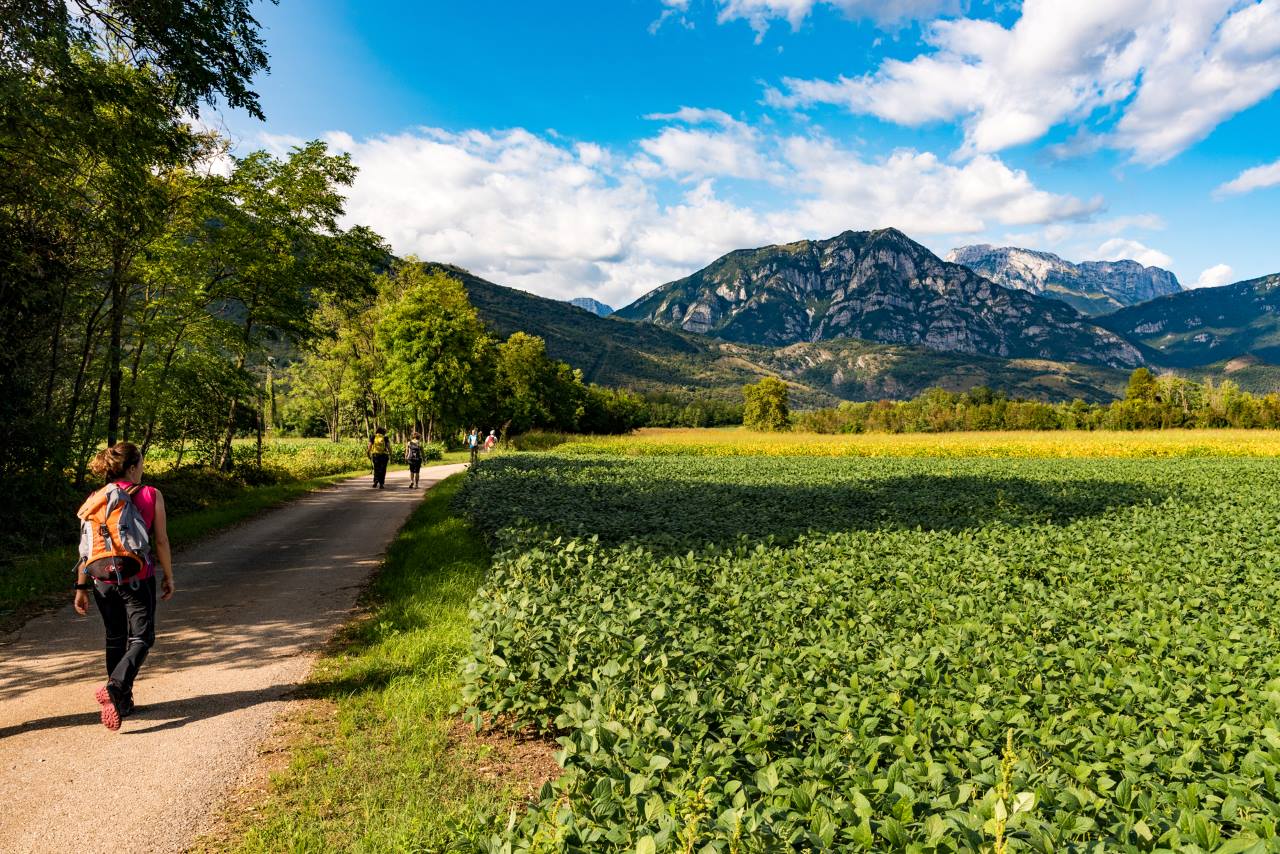
0 Comment